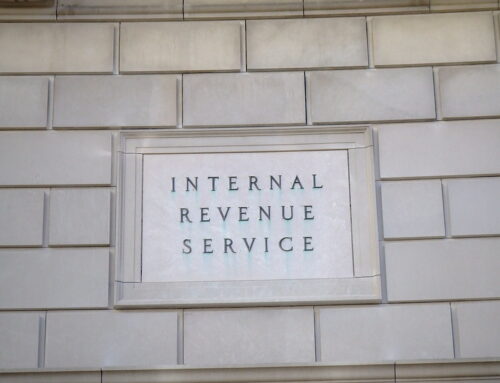Weekly Wastebasket
Lawmakers Are Behind On Budget
Congress still has a day job - funding the government.
In any given year, when it comes to funding the federal government, lawmakers are like a college student who waited until the last minute to pull an all-nighter. Transparency and accountability pretty much go out the window. The ongoing pandemic and required public health response makes it even worse than usual.
The pandemic and the resulting economic fallout have lawmakers in the full throes of shiny object syndrome. Somewhat understandable, given that roughly $4 trillion of federal pandemic relief funds went out the window over an eight-week period – an amount just a half a trillion dollars shy of the entire federal budget in fiscal year 2019. And there’s likely going to be another ginormous package in the coming weeks.
But what’s that saying about campaigning in poetry and governing in prose? The business of the nation does not cease despite all the distractions. The end of the fiscal year is September 30th and federal agencies need to have budgets in place. Keep in mind Congress is gone from the end of the July until after Labor Day, and then it’s a sprint for their electoral lives.
Don’t get us wrong – the bills are emerging, but they are where they would normally be in May. And because of voting procedures to minimize exposure, there’s very little ability to affect or amend the legislation once it comes out of committee.
So what’s in the bills we’ve seen so far? (And we’re just talking House, here.)
The Defense appropriations bill has many wasteful provisions. But for today we’ll focus on the persistent obsession with adding more aircraft than the Pentagon is requesting. Every. Dang. Time. This year the House Appropriations Committee offers up 12 additional F-35s, 2 additional C/KC/MC-130Js, 16 MQ-9 Reapers (when the Pentagon requested 0), 2 additional V-22s, 3 P-8A (again, the Pentagon requested 0!), 1 additional E-2D, and 2 additional CH-53Ks. Yes, some of these airframes were on the so-called “Unfunded Priorities Lists.” But, as we’ve been saying for years, in a budget request as huge as the Pentagon’s (over $700 billion) if something ain’t in the request, it ain’t much of a priority. Let’s call these what they really are: Undercover earmarks.
The Energy and Water appropriations bill includes yet more money for Pentagon programs in the National Nuclear Security Administration (NNSA) portion of the bill. This additional $18 billion bumps up every major subsection of NNSA: Weapons Activities gets $13.7 billion ($1.2 billion more than last year). Naval Reactors get $1.7 billion, an increase of $35.6 million over FY2020. And Nuclear Nonproliferation gets $2.2 billion, a $75 million increase over last year. That is, those are the line items and plus-ups under normal procedure. Lawmakers also decided to tack on a $40+ billion wish list to their bill this year. The new “Additional Infrastructure Investments” title doubles down on poor funding decisions, like dumping another $192 million into small modular reactor development on top of the typical $100 million in the base bill. They also throw in an eye-popping $17 billion in the add-on for the Army Corps of Engineers. The reality is the add-on is just posturing and is tucked in at the end to be easily discarded.
The Homeland Security appropriations bill totals $50.7 billion – that’s $48.1 billion in nondefense discretionary spending, $2.8 billion in defense spending (because spending for the Pentagon seems to be creeping into every possible appropriations bill) AND $215 million for Overseas Contingency Operations (OCO) spending. OCO is the multi-headed dragon that is impossible to kill and you can imagine us at TCS screaming into a towel so as not to startle the neighbors. But, in the good news category, the draft bill attempts to end the President’s raids on military construction funds to build a border barrier. We’ll be rooting for that provision.
The current Agriculture appropriations bill provides $23.98 billion in total discretionary funding, an increase of $487 million above FY20. With the COVID-19 pandemic response doling out billions to agriculture, it was surprising that the Ag approps bill didn’t include anything controversial. Given that the House and Senate are far from reaching an agreement on another ag stimulus response. The HEROES Act that passed in mid-May included some restrictions on how the USDA can distribute funds through the Commodity Credit Corporation, while the Senate wants to expand its usage.
In the good news category, the $36.8 billion Interior appropriations bill includes provisions that would tackle two taxpayer issues: money losing timber sales and drilling in the Arctic National Wildlife Refuge. The bill would prohibit the Forest Service from subsidizing roadbuilding for loggers in Alaska’s Tongass National Forest, one factor driving the upside-down timber sales in the region. After losing $600 million from Tongass timber sales over the last 20 years, taxpayers should knock on wood the provision get enacted. The bill also includes language requiring auctions for oil and gas leases in ANWR to generate at least $500 million before the Department of the Interior signs off on new drilling. Our own analysis shows that the lease sales will likely generate between $9 and $14 million, far short of the $1 billion estimate Congress relied on to authorize the auctions. This is exactly the type of accountability taxpayers need.
Between the urgency to put out the still raging fire of the pandemic, and appropriate federal funding before the drama of the election is upon us, the instinct is to just get it done. By all means, do the job. But do it with due consideration for the taxpayer’s dollars and cents, transparency and oversight of where all the money sloshing through the system is going, and the authority and responsibility that comes with the power of the purse. In other words: Congress, do your job.


















Get Social